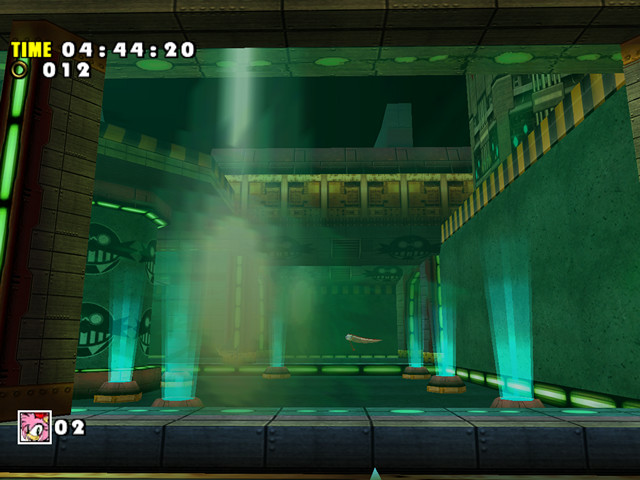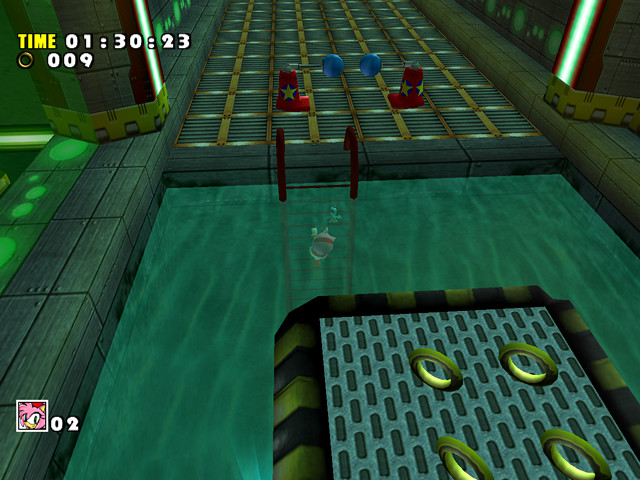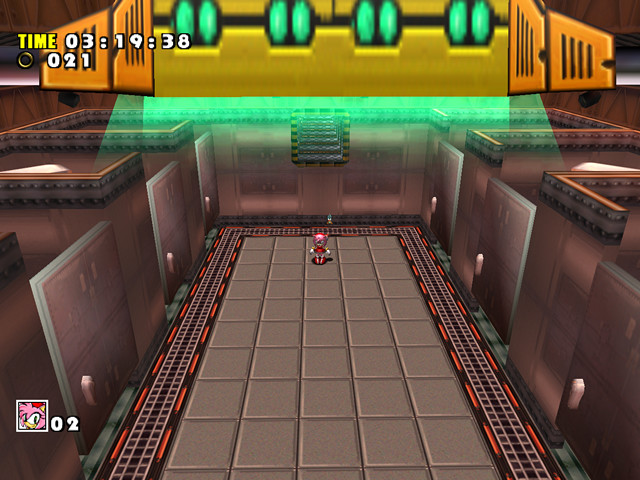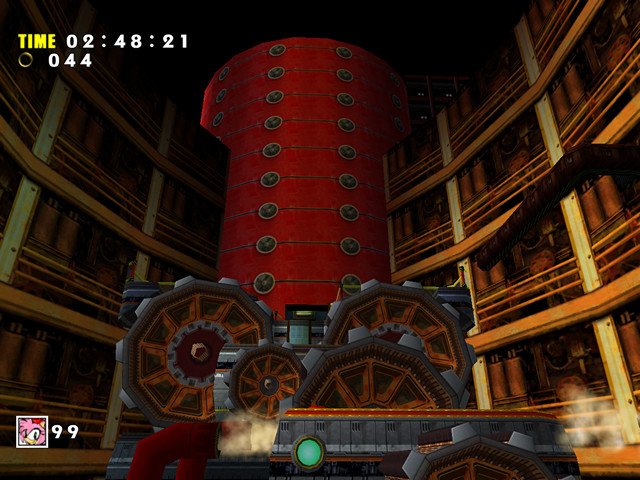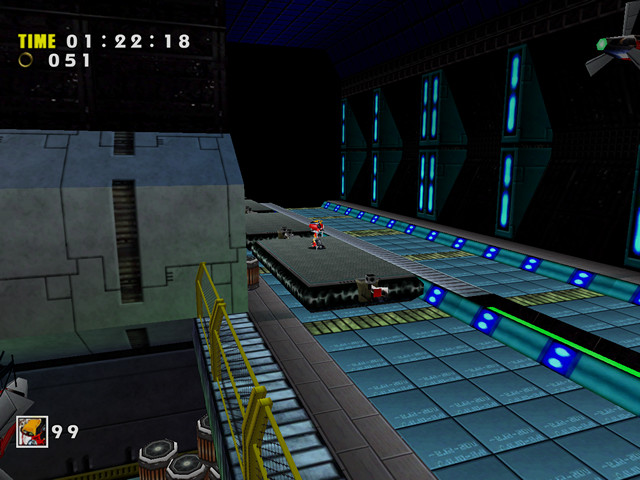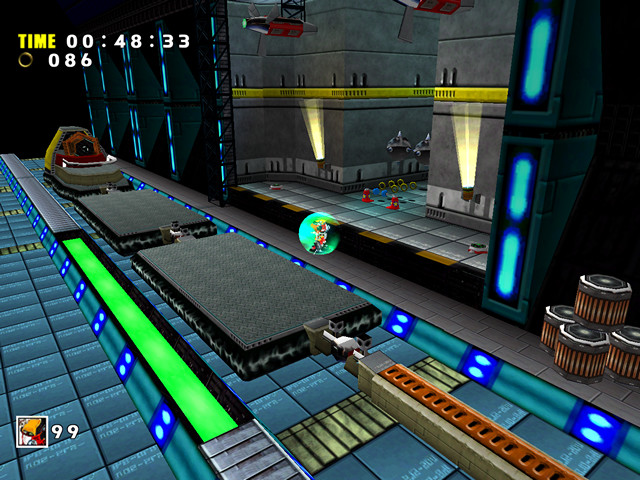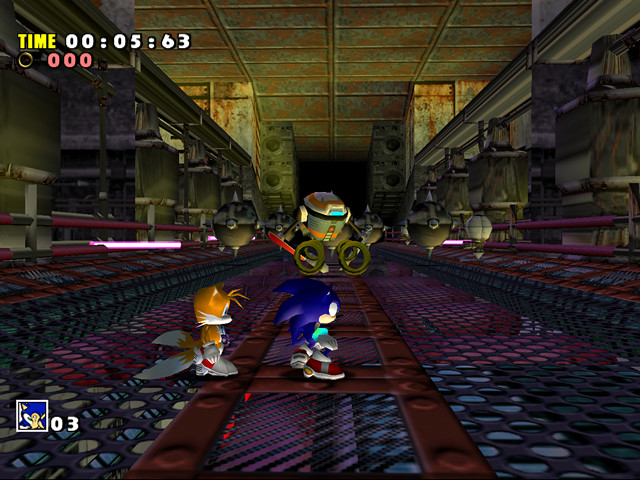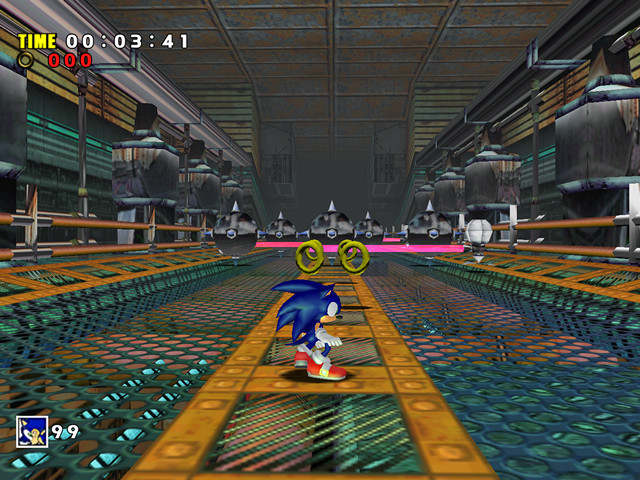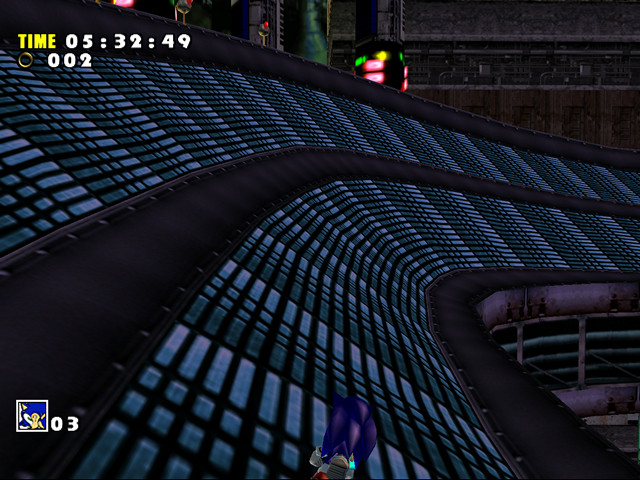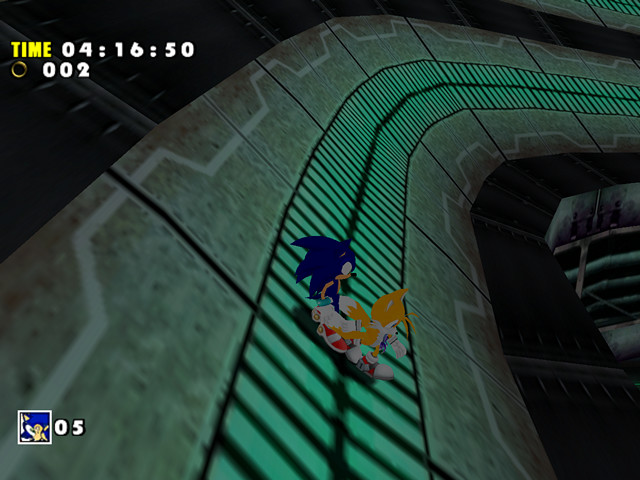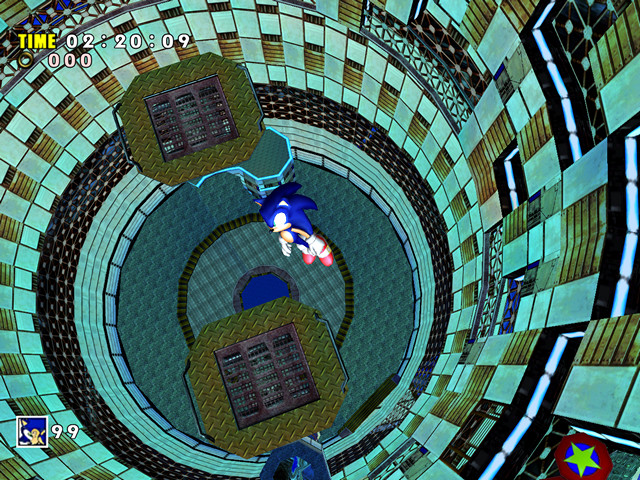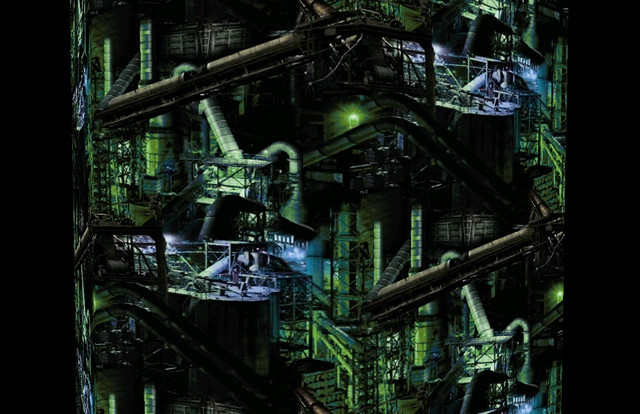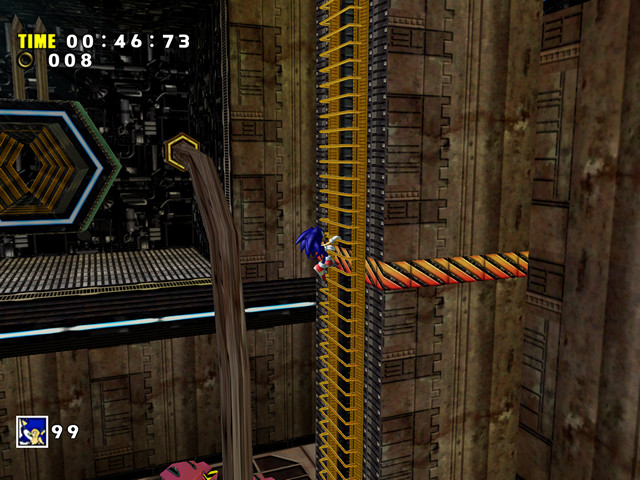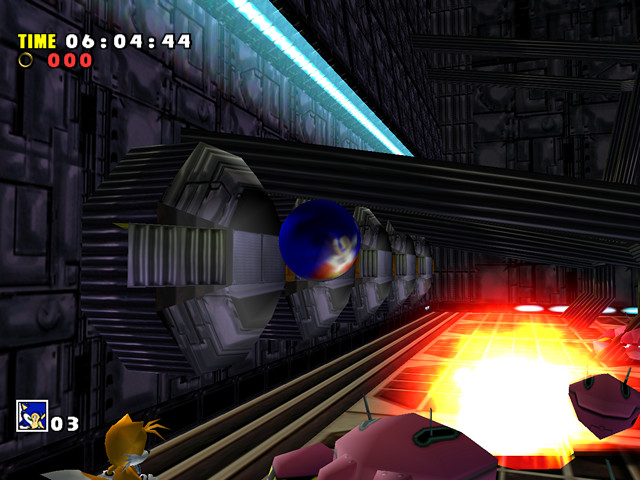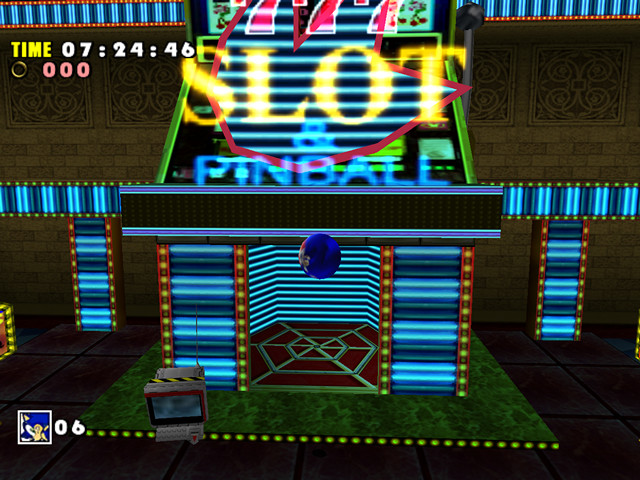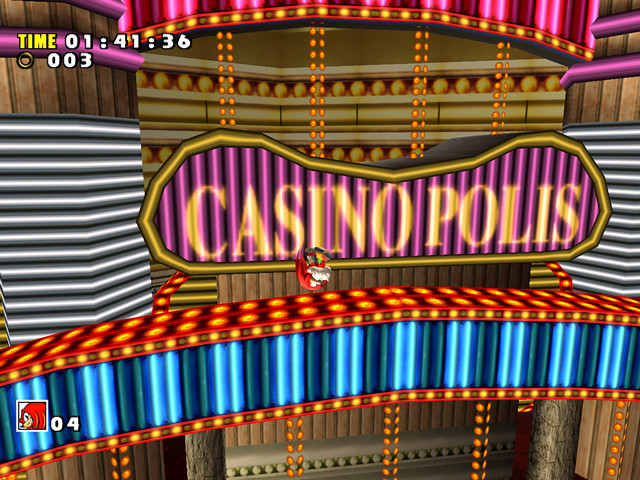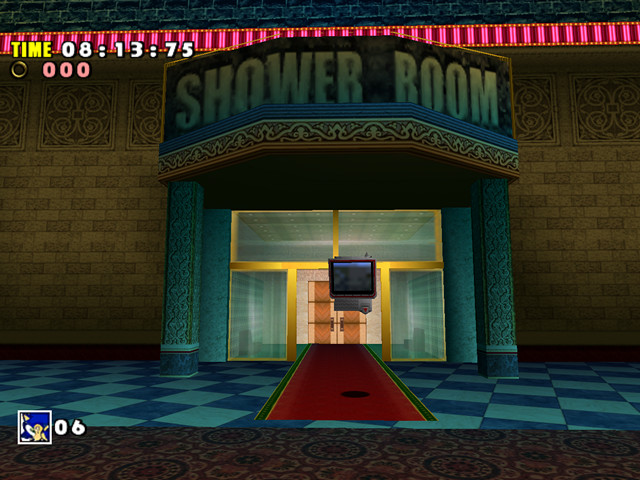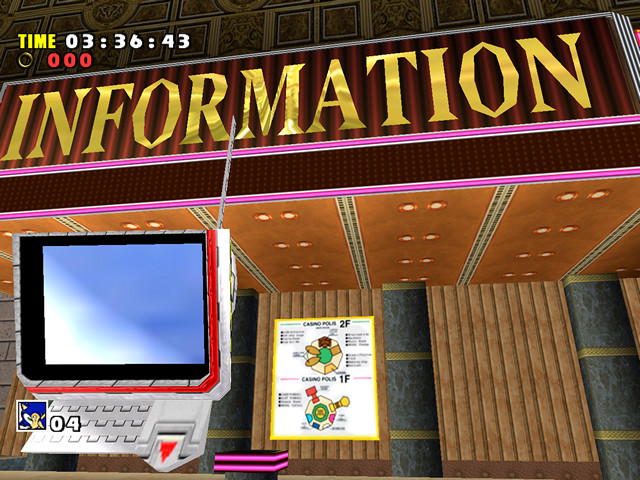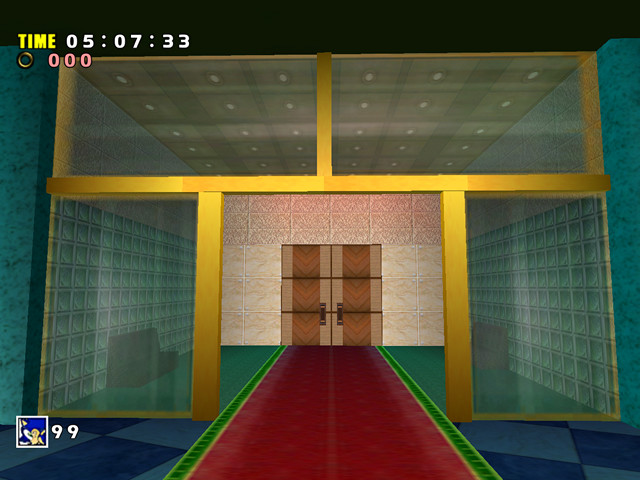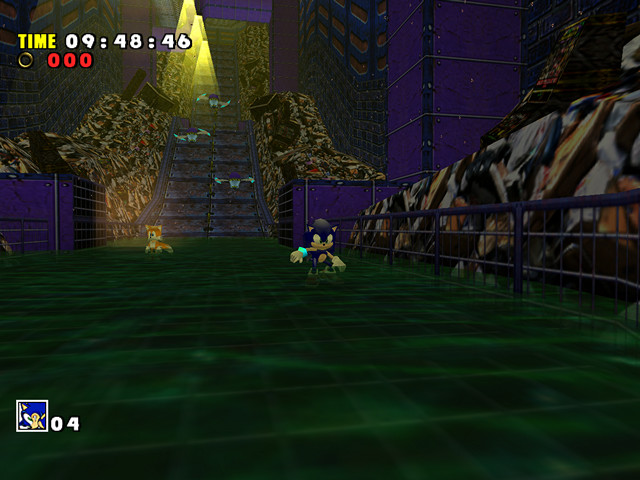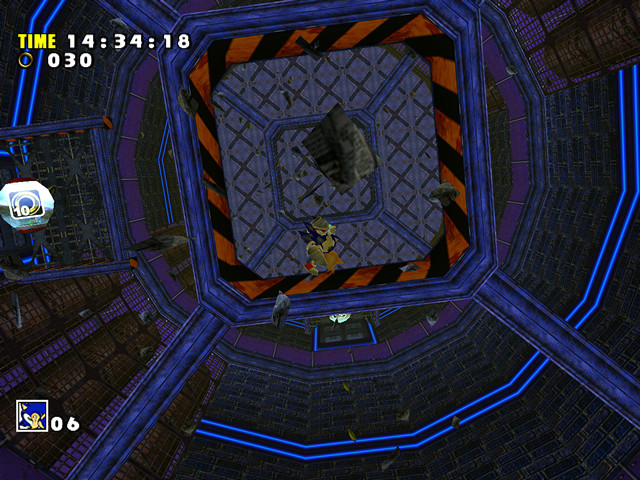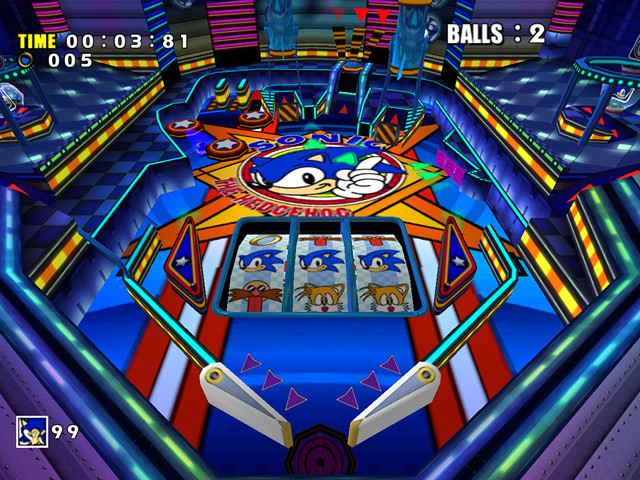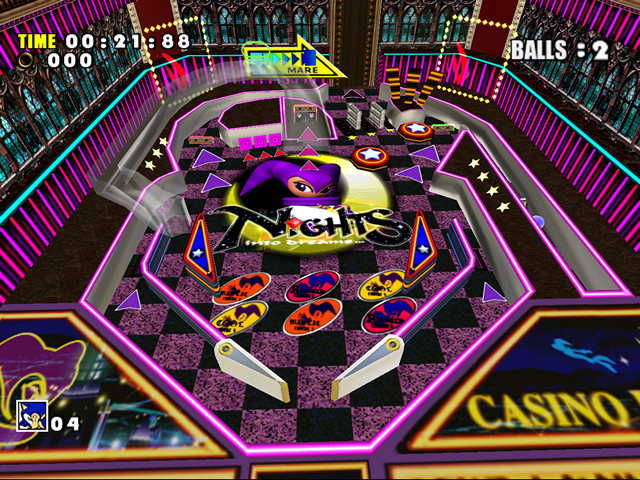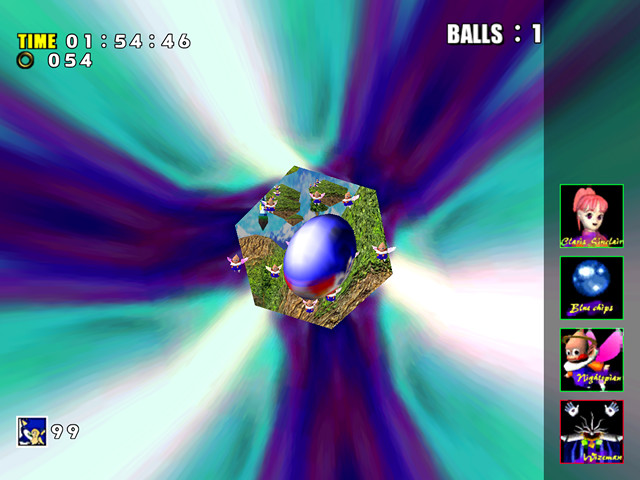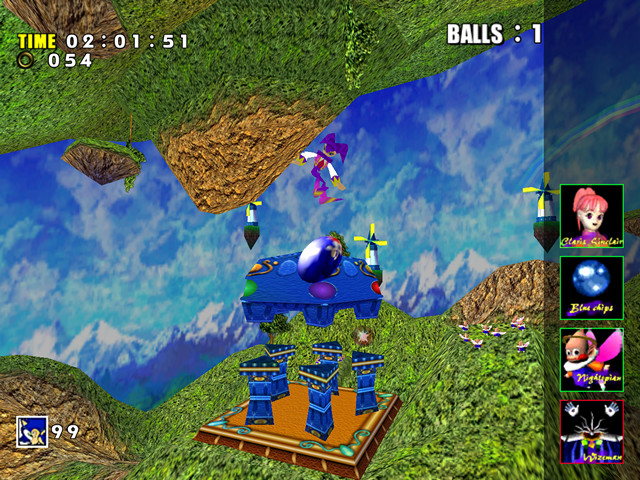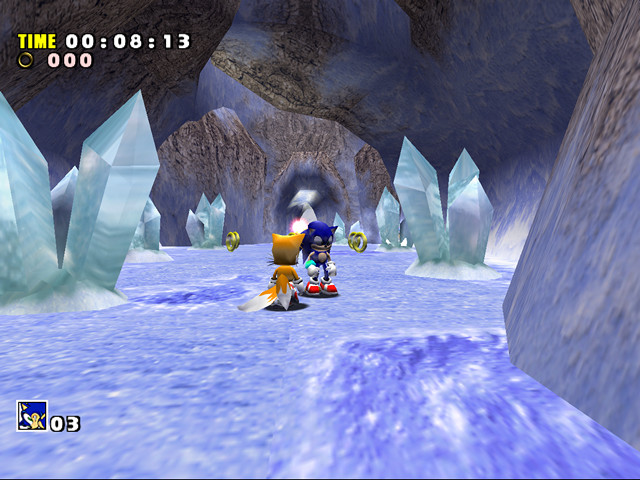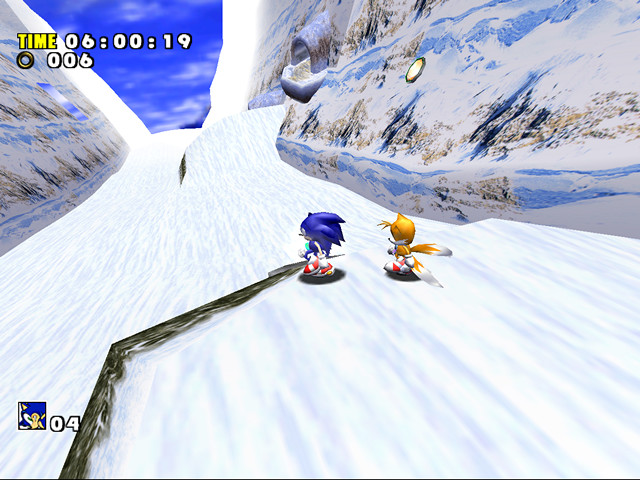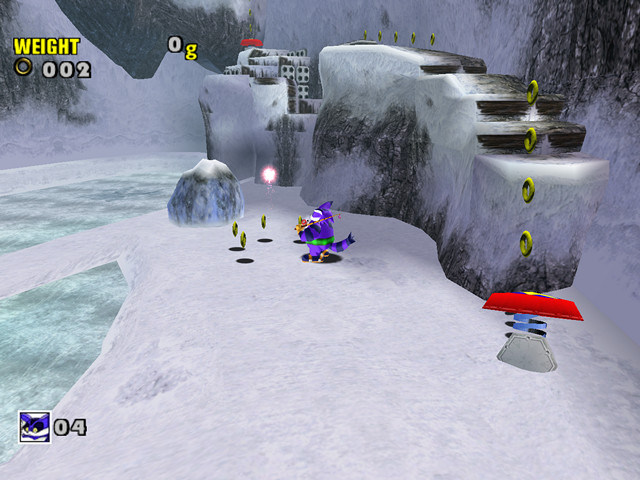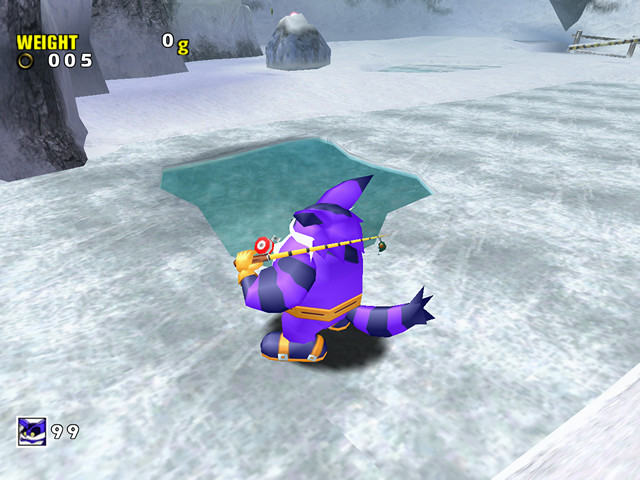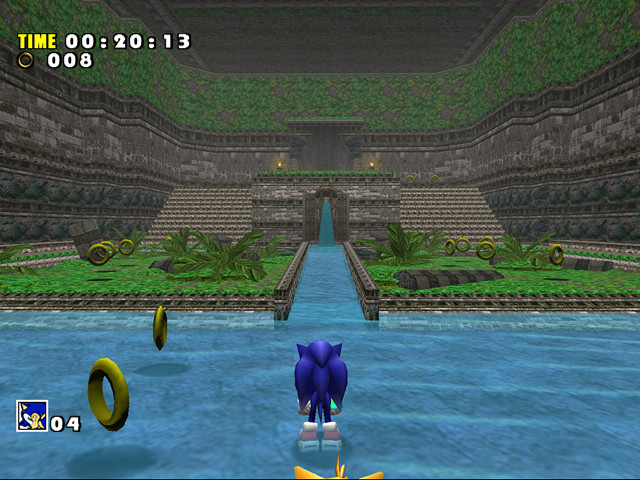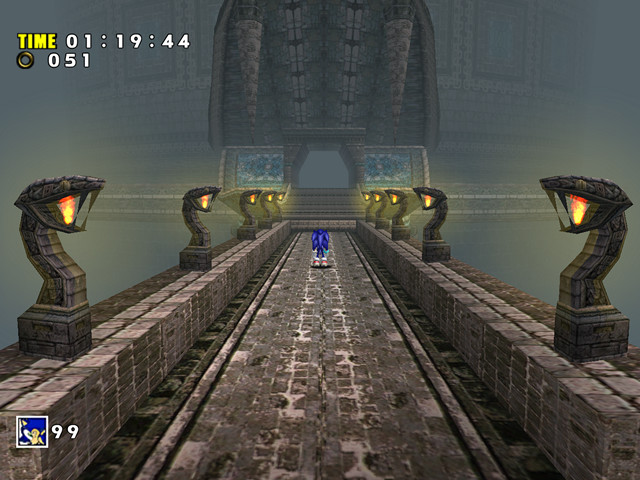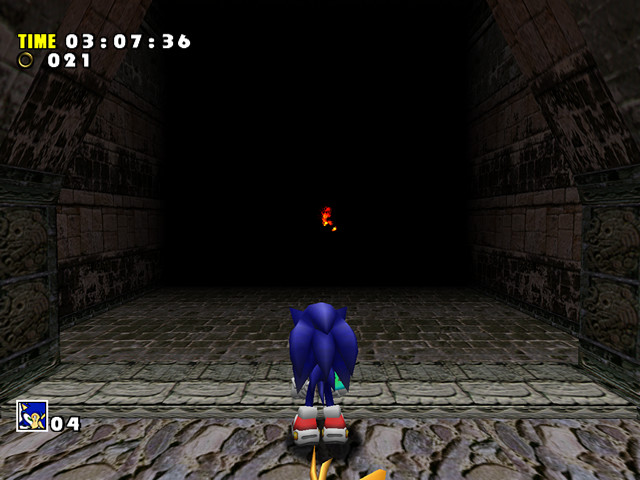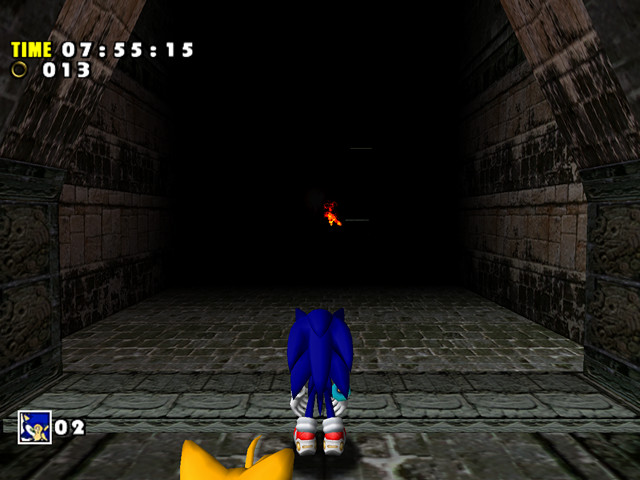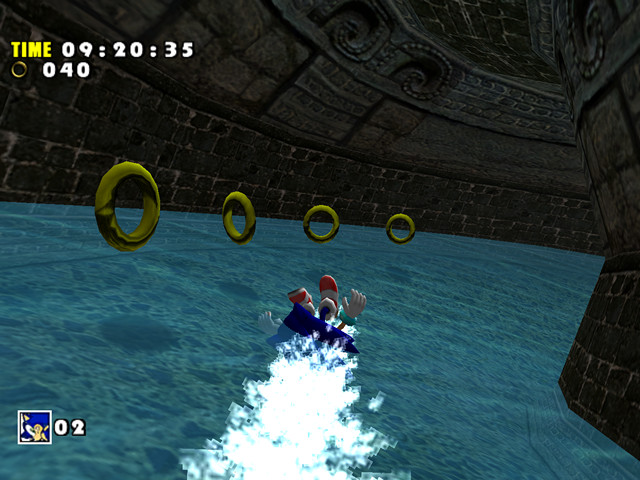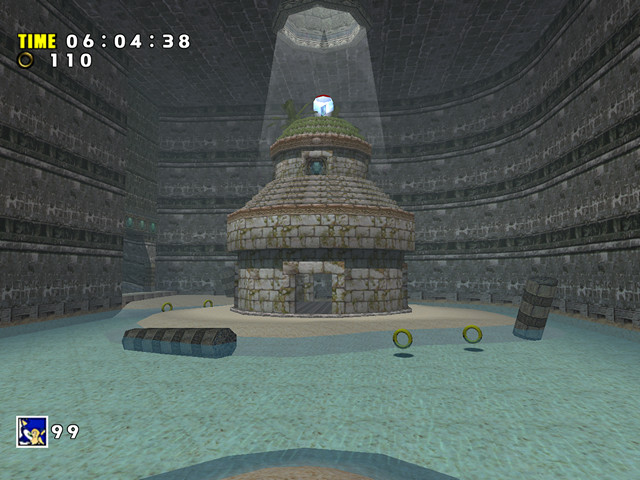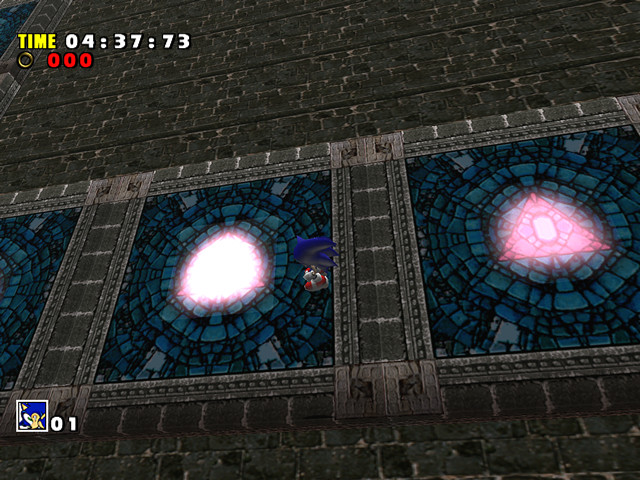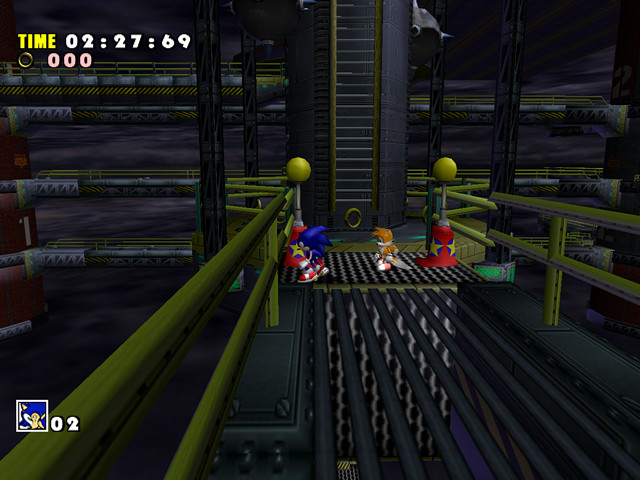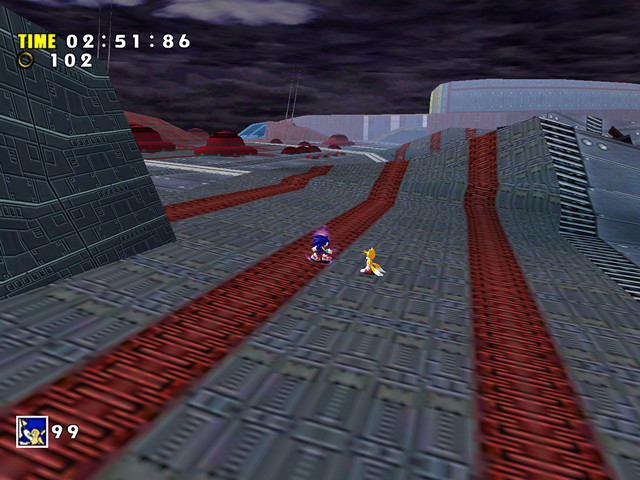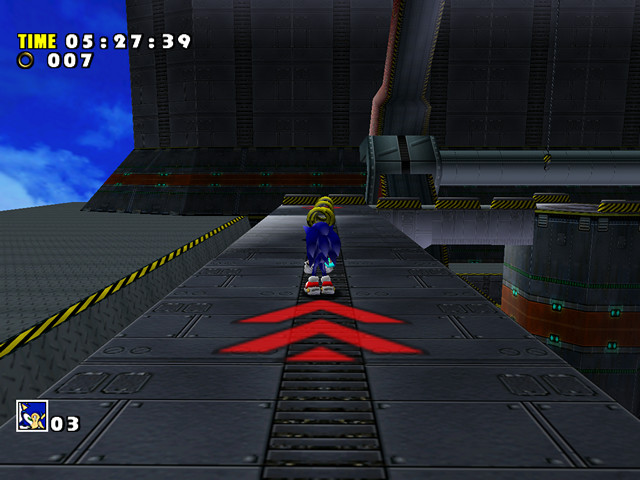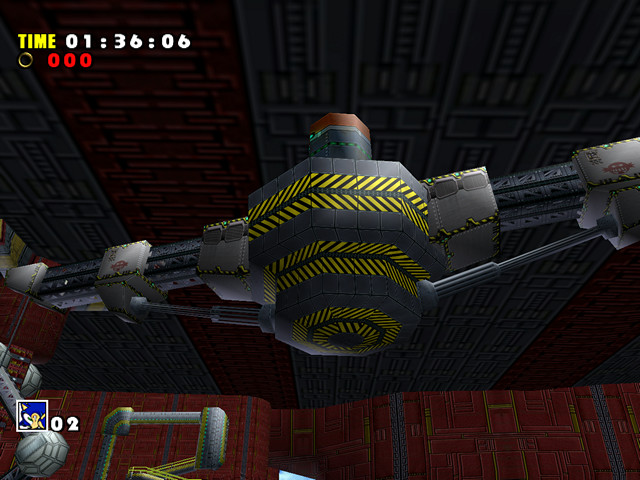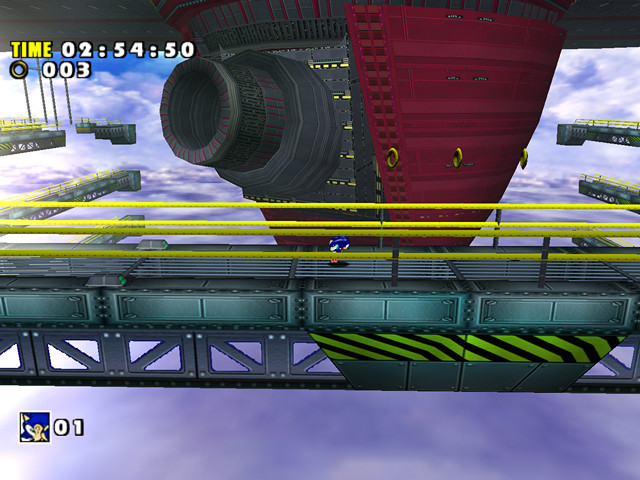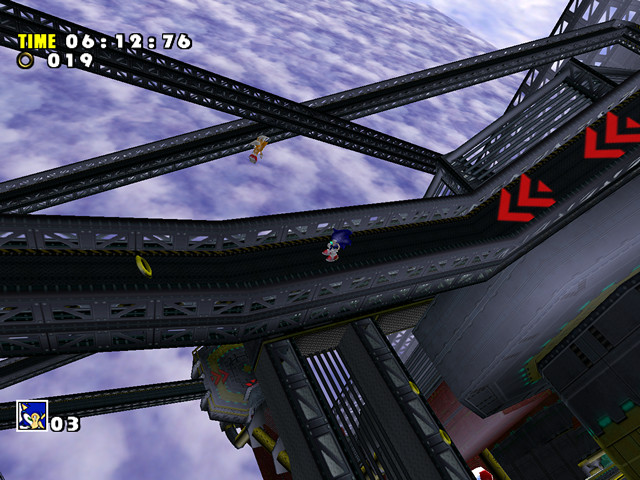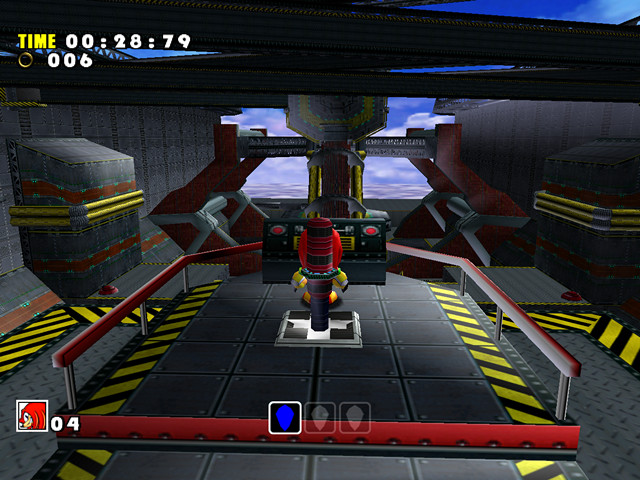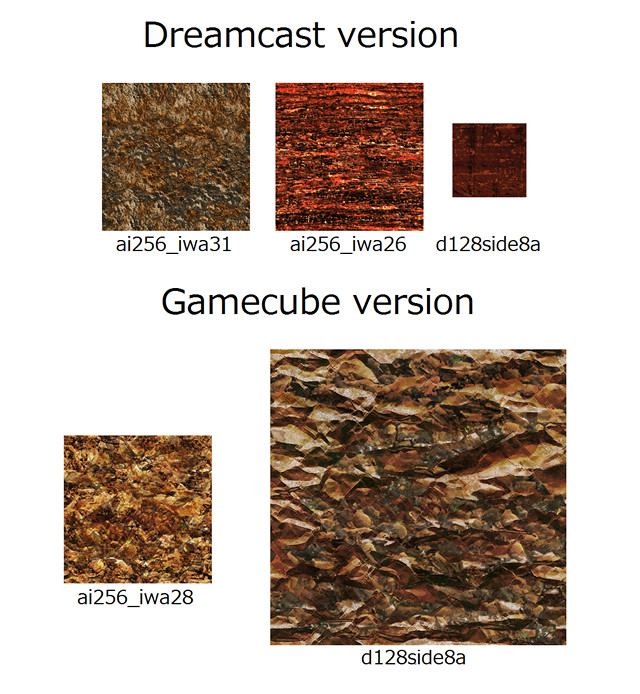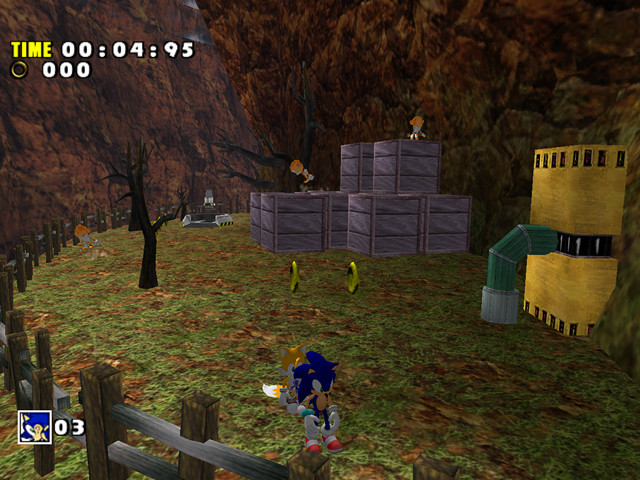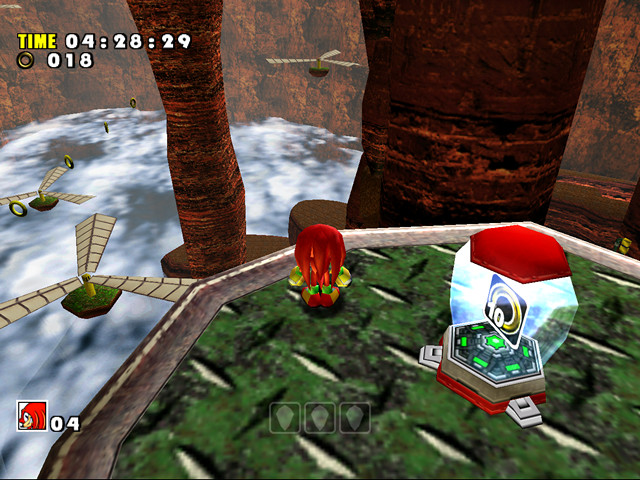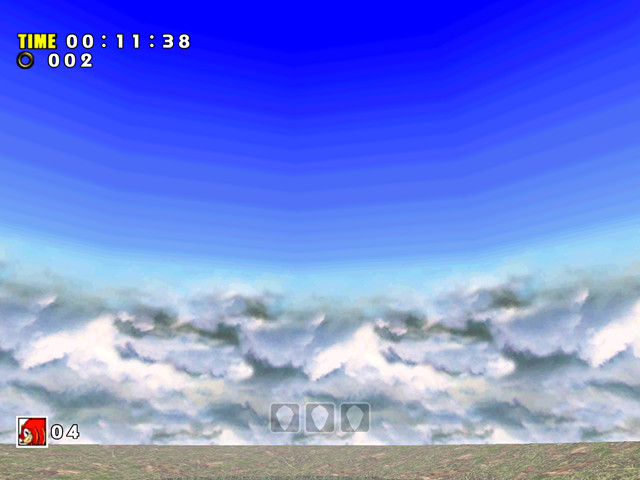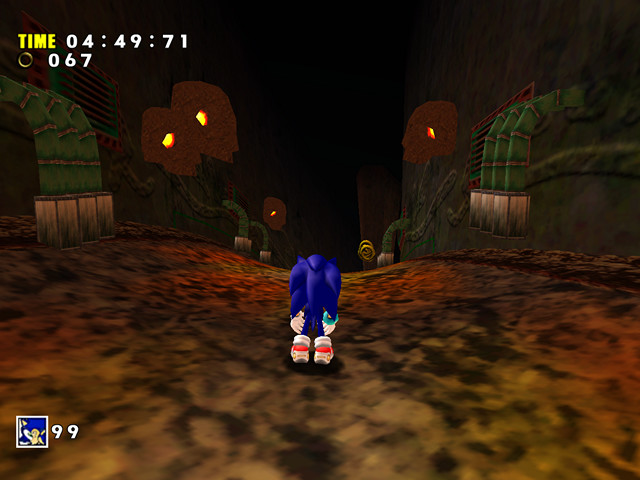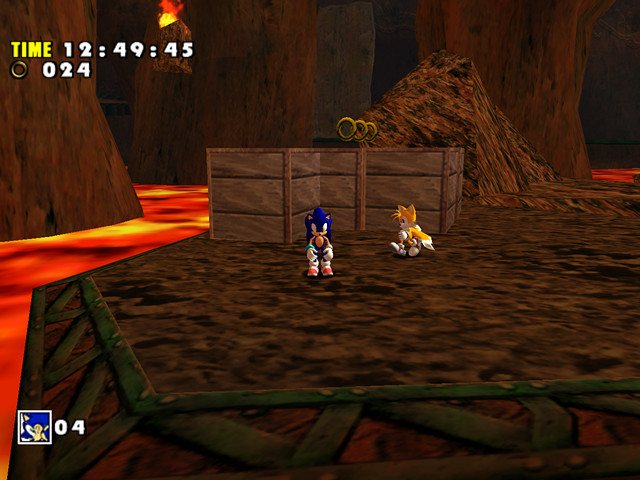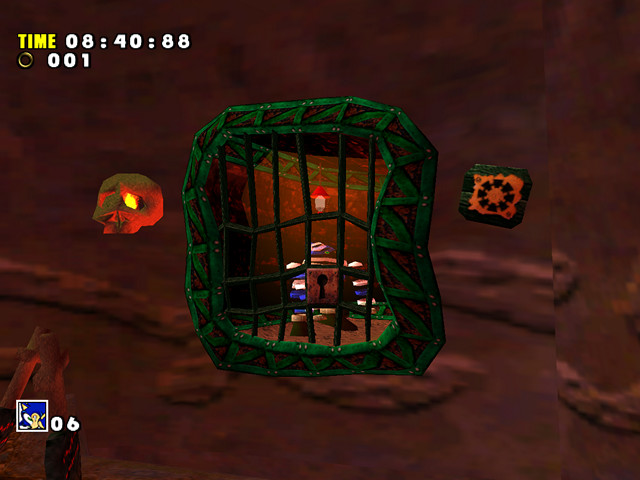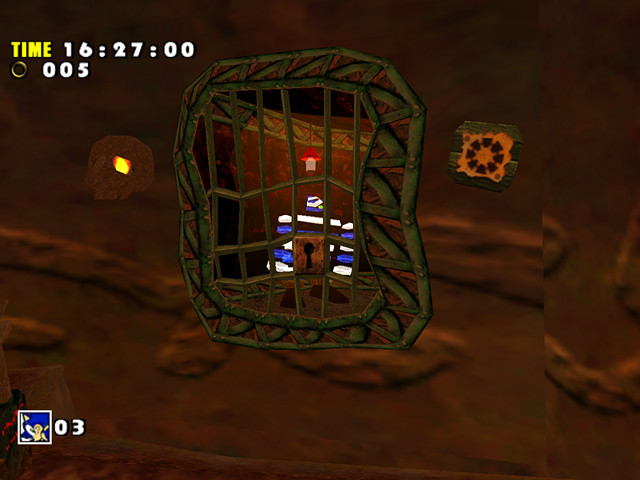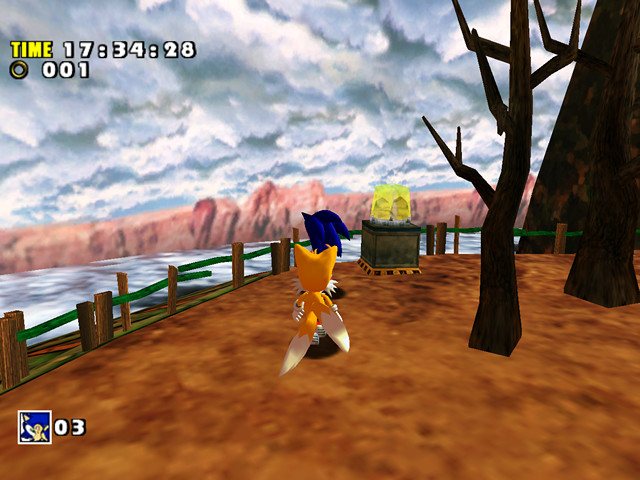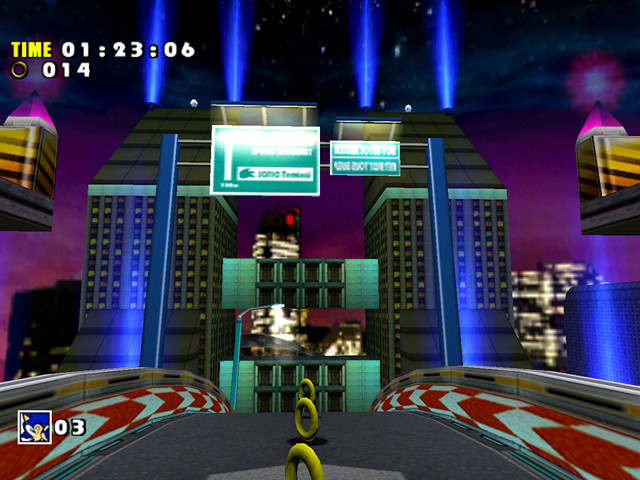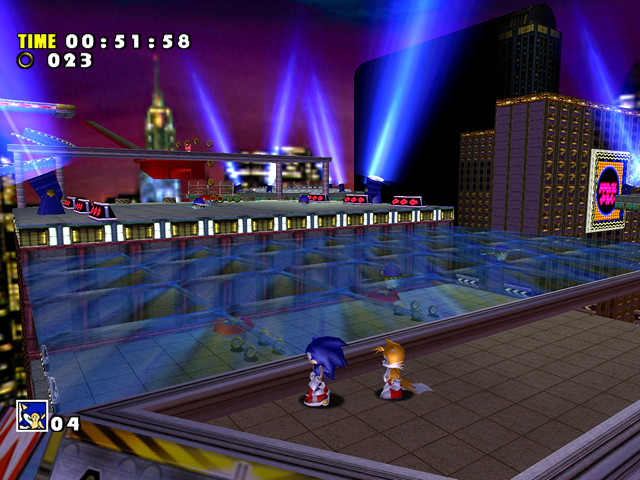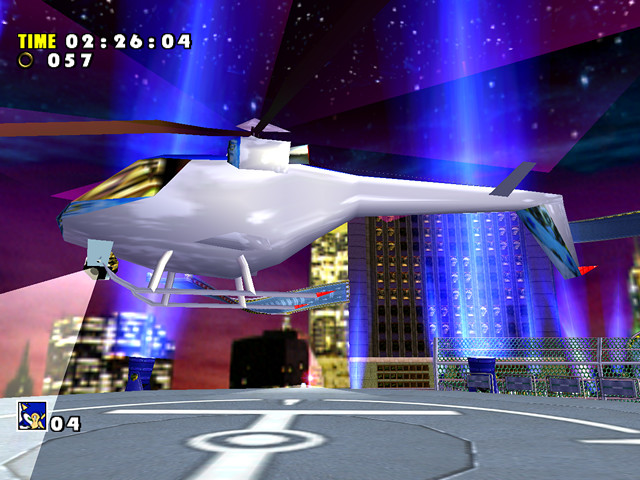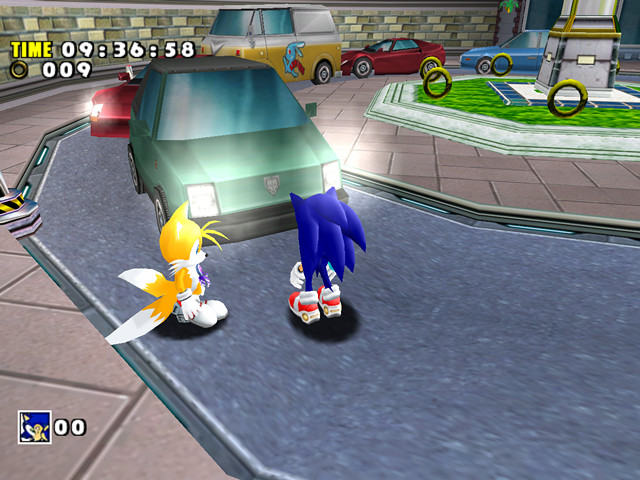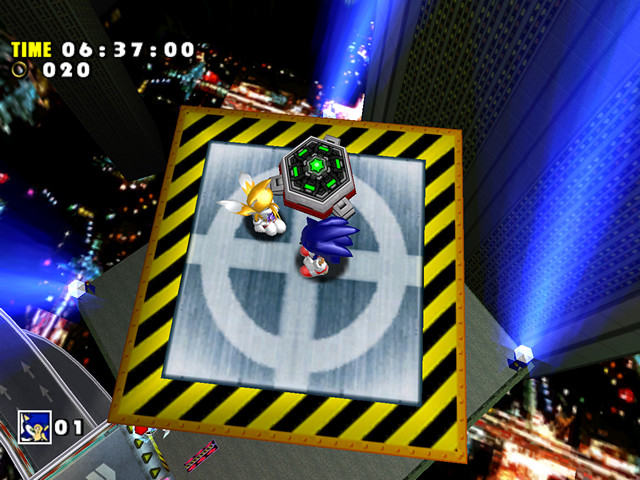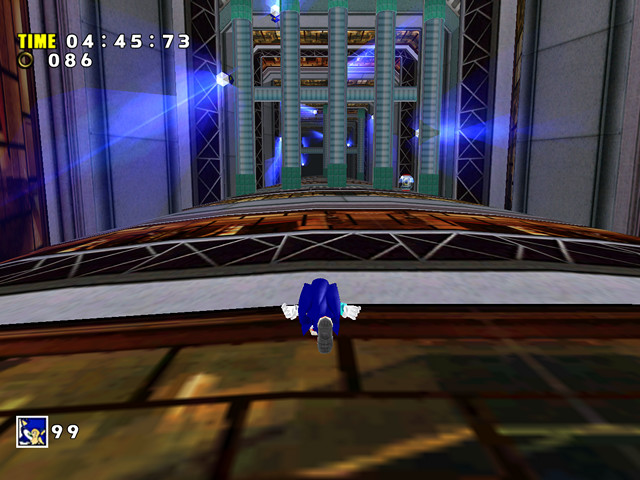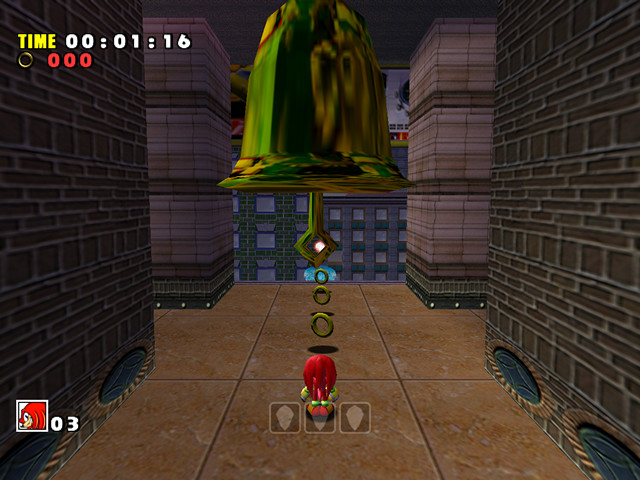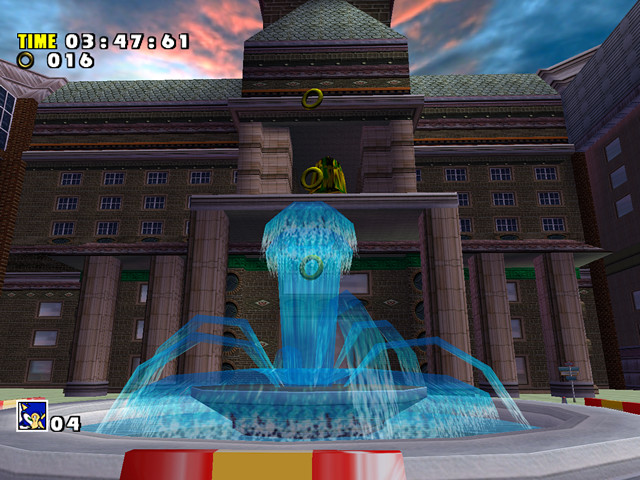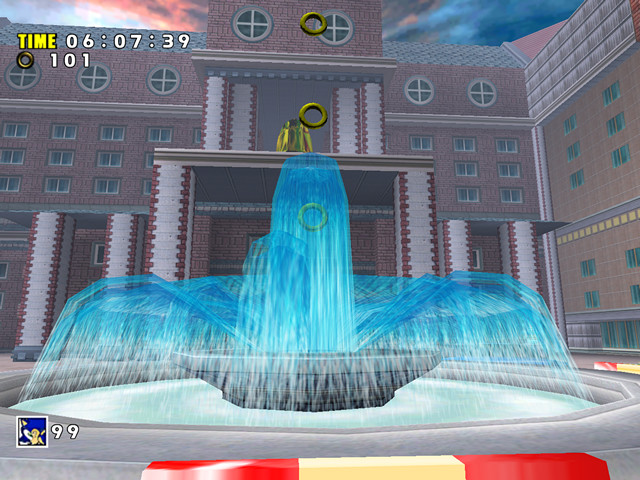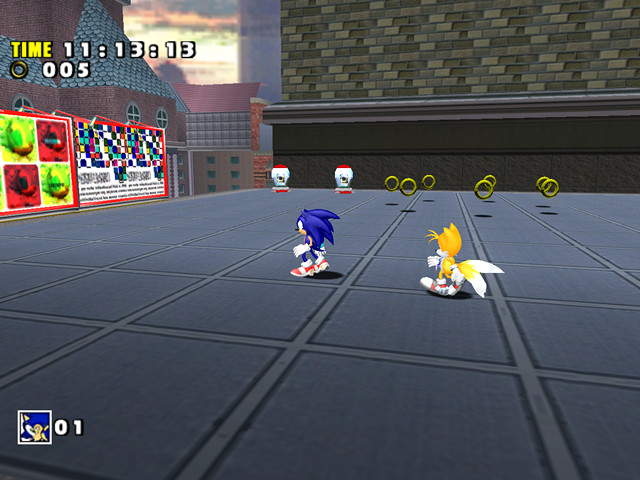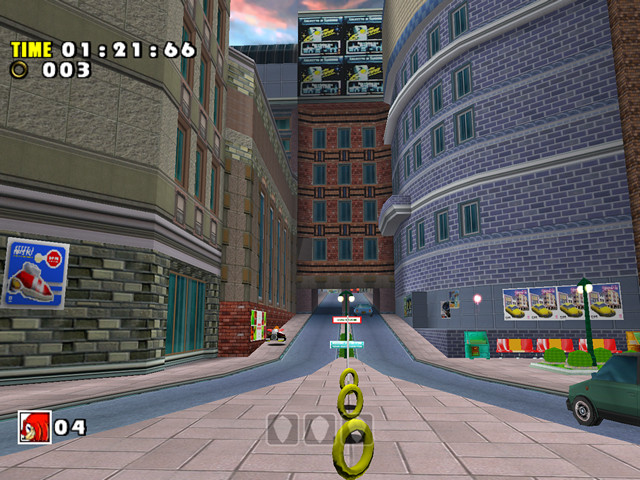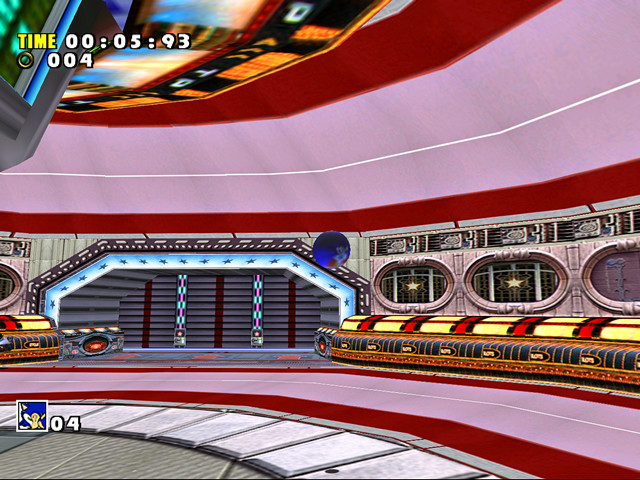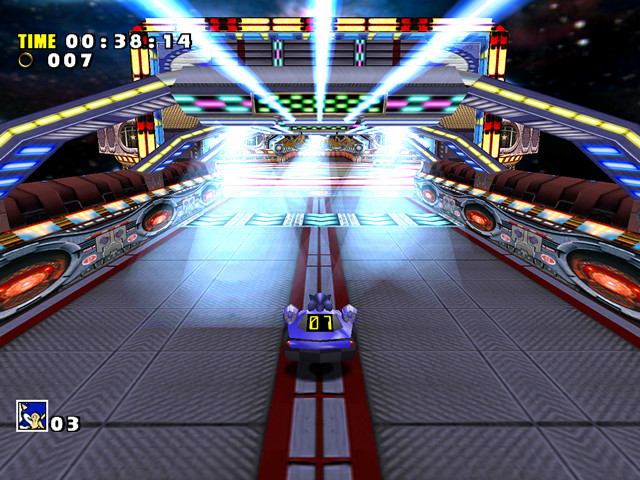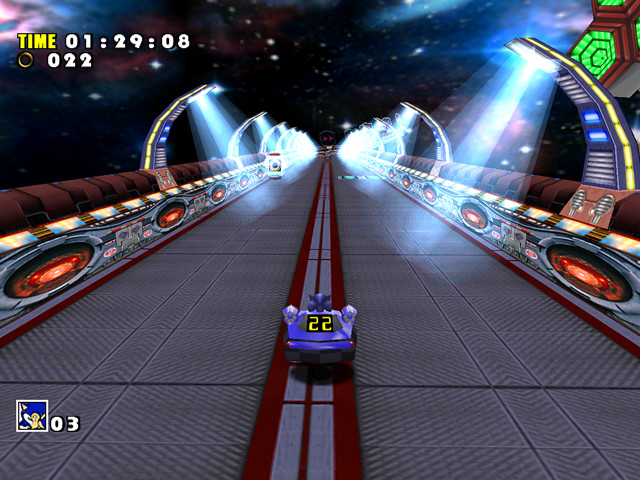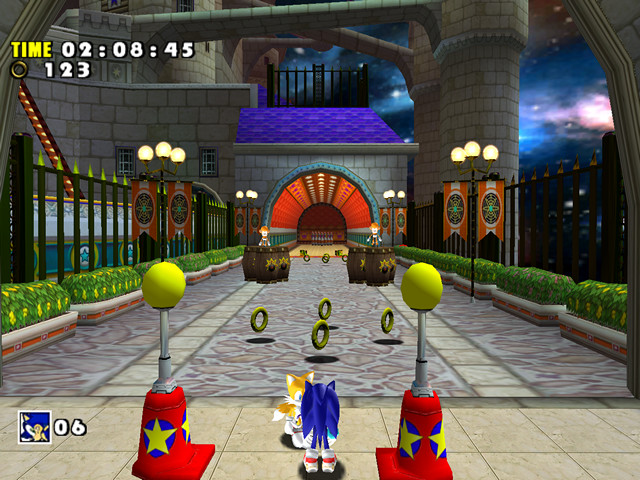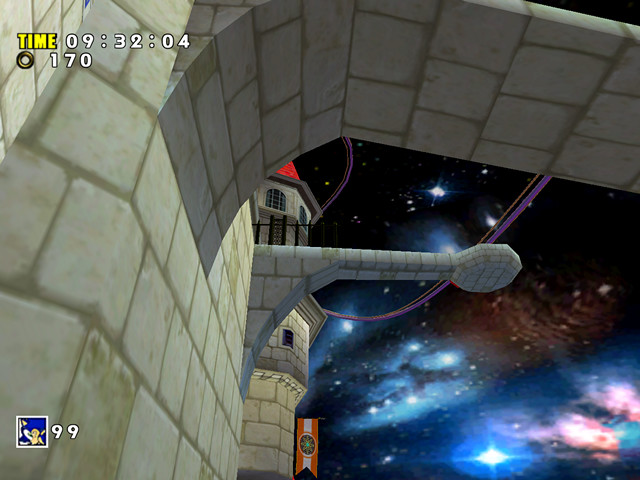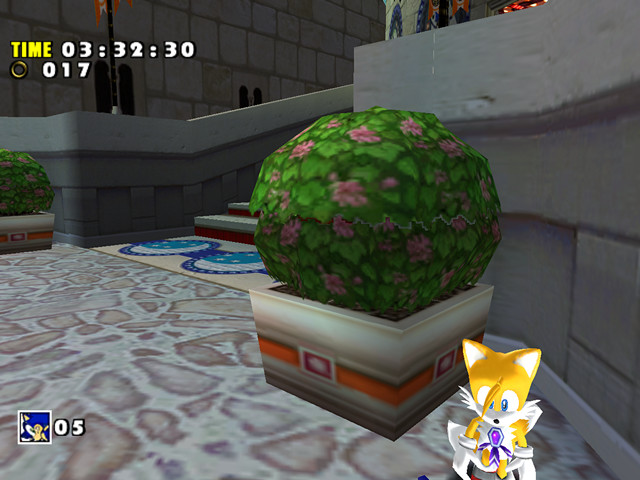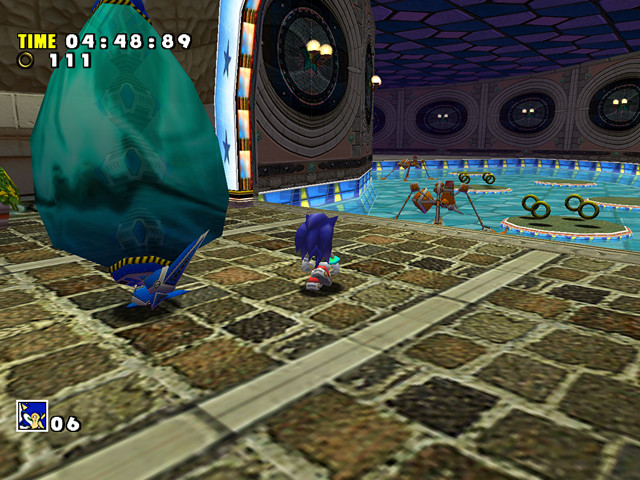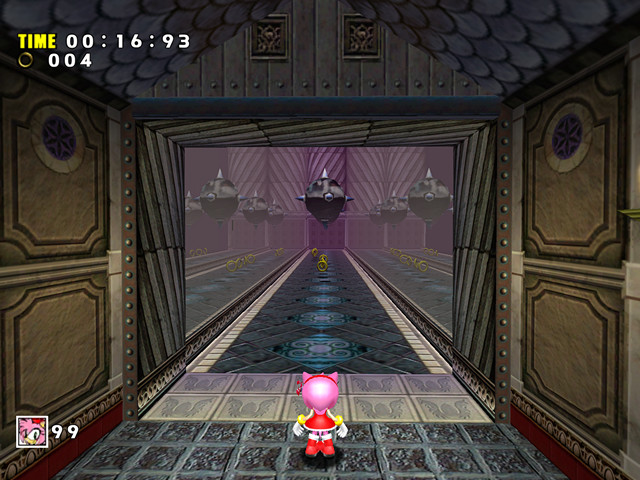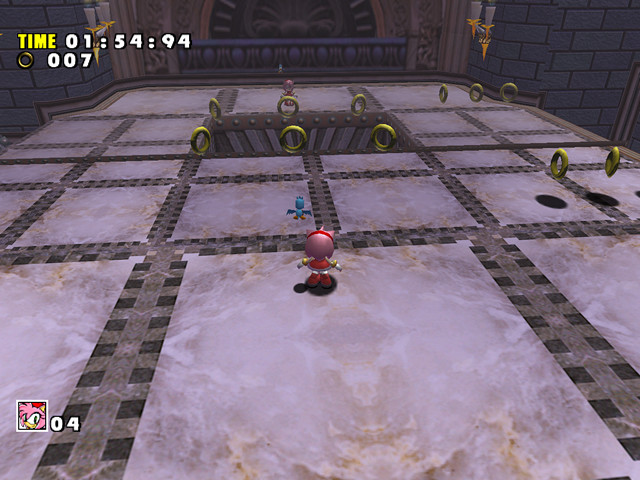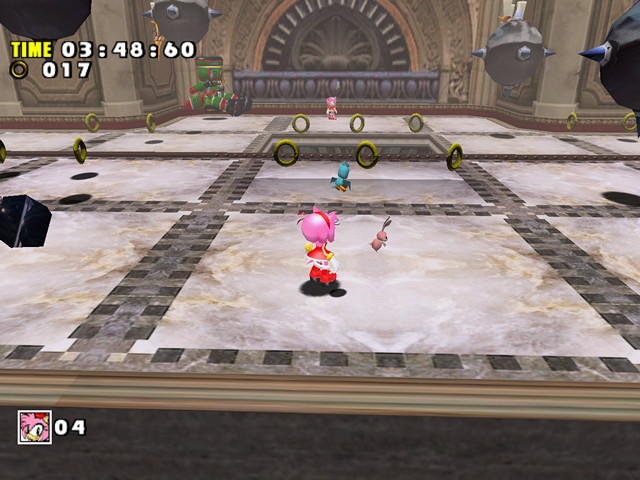Hot Shelter received fewer downgrades in SADX than other levels, with some lighting issues and only several effects removed. Compared to Final Egg, this level is not broken at least. Let’s have a look at some problems with the SADX redesign of Hot Shelter.
The first area in Amy’s stage has a different lighting setup and some texture changes. If you’ve read previous comparisons, you know SADX doesn’t seem to like glass surfaces with environment mapping, and this level is no exception. In this particular area the glass wasn’t removed or made a solid texture, but the UVs were edited to make it look more pixelated.
From a quick look the lighting change doesn’t seem bad. SADX gets rid of the green tinge of the Dreamcast level, although it readds it in some areas as vertex colors. SADX already has dark green lighting in Speed Highway, Casinopolis and Final Egg, so it’s nice to have something a little different. It’s hard to say whether this area is an improvement over the Dreamcast version – it’s just different.
The area outside the elevator has also received some redesign. The carpet texture is different, the shadows on the door and the statues are stronger, and wood textures are replaced with metal, which looks slightly low resolution but still acceptable. This is one of the few areas that hold up relatively well:
The green glass problem is also present in the aquarium section, adding a pixelated blob on aquarium walls:
The water doesn’t render behind the glass walls in SADX, which leads to an awkward black space (the water is still there but it doesn’t show up due to transparency issues).
The issue with unnecessary processing of material colors specific to the PC port shows up again here, adding a strange orange color to the floating platform:
The floor in the above screenshots has more detailed lighting on the Gamecube, but not all areas in the level have better lighting. For example, the room with the water drainage switch has more basic lighting than on the Dreamcast:
There is also a problem with the water drain animation. The model used in that animation had its mesh order swapped to avoid rendering issues, however the code to animate the UVs was not updated accordingly. Because of that, part of the water mesh near the top isn’t animated:
| Dreamcast | Gamecube |
|---|---|
The green light you see in some rooms in Acts 2 and 3 has the actual light part missing in SADX. The PC version also broke some UVs in the area because of texture mirroring.
Here’s a closer look at the messed-up UVs. You can also notice that the water is no longer transparent, which isn’t a major issue, but can’t be called an enhancement either:
The mirrors, which had different textures for male and female bathrooms, are now replaced with a solid color:
Fog in this area was reduced, and the background’s UVs were adjusted to make the distant mechanisms look smaller. The replacement texture’s resolution is half the resolution of the Dreamcast texture, although both are included in the game data. A similar downgrade happened with the background in Final Egg Act 2.
The lighting in this area is relatively good in SADX, although the bright yellow parts that are supposed to be lit up aren’t bright enough.
Something’s wrong with the bridge texture in the PC version, however. It looks more blurry than its console counterparts:
If it was a simple texture recompression/mirroring problem, it would be easy to fix by replacing the texture. However, the UVs on the model were also adjusted to make the texture look more washed out. To restore the proper look of the bridge, the entire model had to be replaced with its Dreamcast counterpart.
When the rocket takes you above this area on the Dreamcast, the level fades in as you fall down, while in SADX there’s no fog so you can see everything right away. It’s hard to say whether removing it was a good or a bad change because it was probably there originally for performance reasons, but one could also argue it’s an artistic element.
| Dreamcast | Gamecube | PC |
|---|---|---|
The floor in the room with colored cubes is brighter and more opaque in SADX. It replaces the environment mapping effect on the floor with solid green and makes the bottom layer barely visible. The lights coming from below tend to pop in or disappear in SADX when you turn the camera or walk around.
Gamma’s level loses its dark yellow and orange tones and gets dark green (again) instead. Note the simplified lighting on Gamma himself as well:
This area doesn’t look too bad with vertex colors if you don’t take into account the overuse of green elsewhere in the game. A minor annoyance is that Gamma’s eyes aren’t lit up at all times, but that problem is specific to his model – read more on this in the Characters section.
This area has a transparency glitch, which only happens in the PC version:
| Dreamcast | Gamecube | PC |
|---|---|---|
This area has received some new textures, which doesn’t look too bad, but now the green glass covering the mechanisms is almost invisible:
Lighting in this area is different, making the Gamecube/PC version slightly darker and less colorful:
The entrance to the final area looks a bit richer on the Dreamcast thanks to its more complex lighting:
To avoid (possibly) rendering issues involving transparent models, the middle part of the slope was made opaque in SADX, which also made the lights inside the slope invisible:
The room where you fight E-105 Zeta has lost neon blue decorations, and Zeta’s textures suffer from recompression. In addition, Zeta’s base animation (the tubes that move vertically) is missing in SADX.
Illumination decorations have been removed in several other areas in Hot Shelter, for example Big’s level has a few of them missing:
The upper segment of Big’s level also has some changes. Fog color is different, you can see farther and the background is changed. Dreamcast fog made the surroundings fade in as you moved around, while in SADX you can see almost everything but with washed out colors. As usual, the fog is thicker in the PC version, but here it doesn’t help the atmosphere too much:
Compared to Final Egg, Hot Shelter doesn’t seem too bad even with all the downgrades. There are quite a few areas in this level where the lighting comes close to looking on par with the Dreamcast original, or even better. It would’ve been an acceptable redesign if it wasn’t for removed decorations, fog changes and low texture quality. If you want to revert this level to the original version on PC, you can install the Dreamcast Conversion mod, and if you only want to restore the original lighting, you can use the Lantern Engine mod. More in the “Fixing the PC version of SADX” section of this blog.







